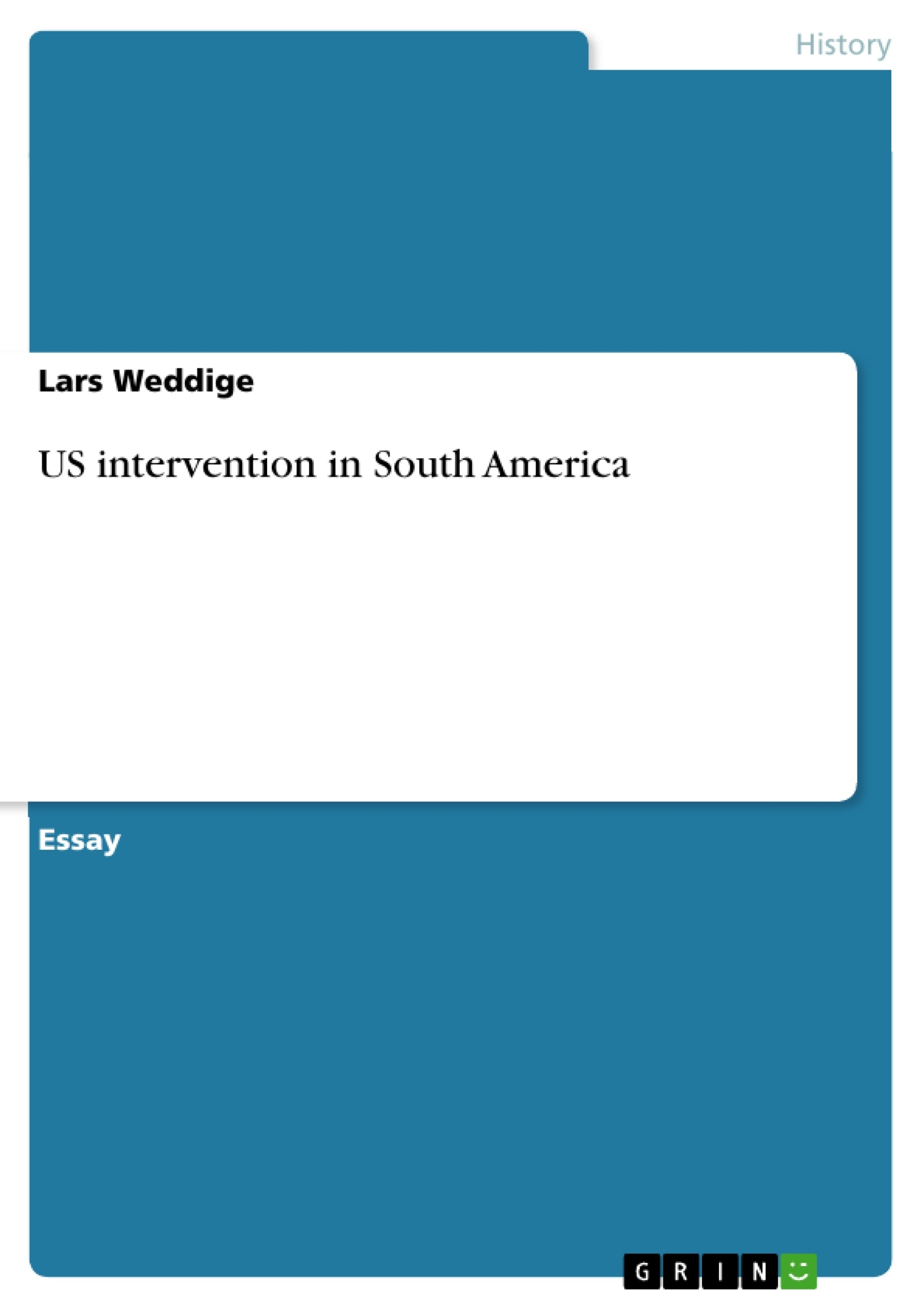An intervention can be conducted in various ways and the US have engaged in nearly all of them. Although I am aware that economic interventions1have gained in importance in the last decades the focus will be on military interventions. These have mostly been conducted secretly and without the direct involvement of the US military. This gave room for rumours which were fed by anti US prejudice which in itself had developed among university scholars because of the interventionist culture. As time has elapsed many former secret documents are available for researchers and it has become easier to get a more objective view of the motivations of US policy. The very fact that the USA tried to cover up its involvement in these ‘operations’ indicates that their motivations were probably not of a philanthropical nature.
The foundations for the US involvement in Latin America were already laid out in 1823 in the Monroe Doctrine. It proclaimed the primacy of US interests in the Western Hemisphere, and in so doing declared a sphere of influence on a grand scale from which the European presence was proscribed. Until the intervention in Cuba it had little influence because the USA was caught up in the civil war and didn’t have the strength and resources yet to challenge the former colonial powers.
Table of Contents
- Introduction
- Intervention in Cuba
- Intervention in Guatemala
- Intervention in Chile
- The attempted intervention in Cuba
Objectives and Key Themes
The text examines the motivations behind United States interventions in Latin America throughout the 20th century, particularly focusing on military interventions. It explores the complexities of US foreign policy in the region and aims to analyze the driving forces behind these interventions, considering economic, political, and ideological factors.
- The role of American economic interests in influencing US interventions in Latin America.
- The impact of the Cold War and the threat of communism on US foreign policy towards Latin America.
- The evolving motivations for US intervention, from securing economic opportunities to containing communist influence.
- The interplay between US intervention and the development of political and economic structures in Latin American nations.
- The prevalence of racial biases and paternalistic attitudes within US policy towards Latin America.
Chapter Summaries
- Introduction: This chapter sets the stage for the analysis of US intervention in Latin America. It highlights the changing nature of US intervention, from primarily military to increasingly economic, and emphasizes the prevalence of secret operations.
- Intervention in Cuba: This chapter examines the US intervention in Cuba, arguing that it was motivated by a combination of economic interests, a belief in Cuban incapacity for self-rule, and racial biases. The chapter analyzes the role of Cuban immigrants in influencing US policy and highlights the justifications used by US officials for intervention.
- Intervention in Guatemala: This chapter focuses on the CIA-sponsored coup d'état against President Arbenz in Guatemala. It suggests that the US was motivated by the threat of communism but also by the desire to protect the interests of the United Fruit Company. The chapter explores the role of dollar diplomacy and the tendency of the US to support groups that align with its interests.
- Intervention in Chile: This chapter examines the US intervention in Chile, focusing on the coup against President Allende. It argues that the US was primarily motivated by political concerns, fearing Allende's Marxist leanings and the possibility of Chile becoming a communist state. The chapter discusses the role of the CIA in destabilizing Chile and the ongoing debate about the extent of US involvement in Pinochet's rise to power.
- The attempted intervention in Cuba: This chapter analyzes the Bay of Pigs invasion, arguing that it was motivated by a desire to overthrow Castro by any means necessary. It examines the role of Cuban exiles in the operation and highlights the lack of a plan for the aftermath of a successful uprising.
Keywords
The central keywords and focal topics of this text include US intervention, Latin America, economic interests, political motivations, Cold War, communism, Monroe Doctrine, Cuban Revolution, Chilean coup, Bay of Pigs, dollar diplomacy, and racial biases.
- Quote paper
- Lars Weddige (Author), 2004, US intervention in South America, Munich, GRIN Verlag, https://www.grin.com/document/68775



